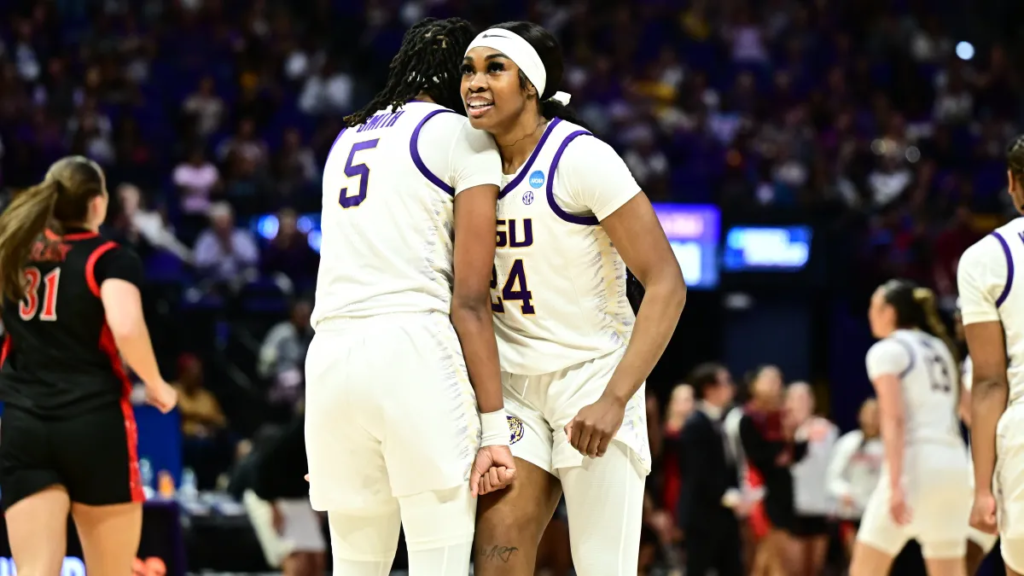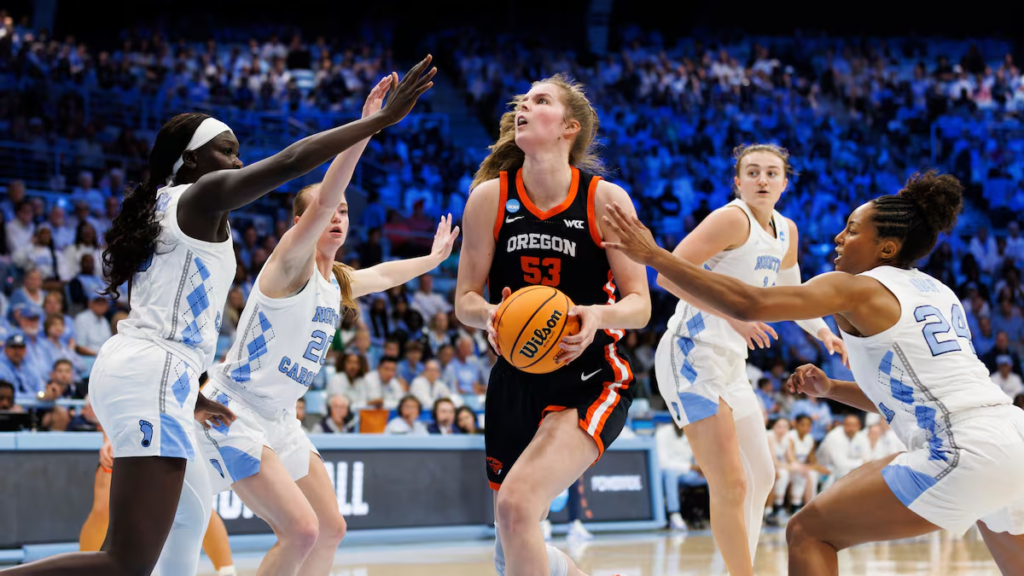Women’s college basketball has experienced remarkable growth over the past few decades, and Women’s March Madness stands at the heart of this transformation. This NCAA Division I Women’s Basketball Tournament has become a premier event in sports, celebrated for its thrilling competition, iconic players, and inspiring moments. What was once a modest event has now become a national spectacle, rivaling the men’s tournament in excitement and significance. The journey of Women’s March Madness has been one of dedication, perseverance, and a relentless push for equality in sports.
The Early Years of Women’s March Madness
The NCAA Women’s Basketball Tournament was first held in 1982, a decade after the men’s tournament had already established itself as a staple in American sports. Initially, the tournament featured only 32 teams, and the event struggled to gain attention in an era when women’s sports were often underfunded and overshadowed by their male counterparts. Yet, even in its early years, Women’s March Madness showcased the skill and passion of the athletes involved.
As with many major sports moments, the rise of Tennessee under coach Pat Summitt and UConn under Geno Auriemma helped set the stage for the growing popularity of the tournament. Their dominance and consistent excellence introduced many fans to the excitement of women’s college basketball. However, it wasn’t until 1994 that the tournament expanded to 64 teams, offering a much larger and more diverse field of competition. This expansion was critical in growing the tournament’s influence, allowing more programs and athletes to showcase their talent on a national stage.
The Tournament’s Growing Popularity
Over the years, as the level of play improved and more teams began to vie for the championship, Women’s March Madness gained traction. Media coverage slowly increased in the 1990s and 2000s, with prominent athletes like Lisa Leslie, Cheryl Miller, and Diana Taurasi becoming household names. Their on-court performances were groundbreaking, not just because of their talent but because they brought attention to a sport that had long been overlooked.
Media attention shifted to the growing prominence of the tournament, and by the mid-2000s, networks like ESPN began broadcasting the tournament to wider audiences. The increased visibility also led to a surge in fan engagement, and the quality of the tournament improved with better player recruitment, training facilities, and coaching across the nation. The evolution of Women’s March Madness reflected the rising professionalism of women’s sports and the increasing recognition of their significance.
The Powerhouses: Teams and Coaches to Watch

While the tournament has featured strong competition across the board, some programs have consistently set the standard for excellence. UConn stands out as the most successful program in women’s college basketball, with Geno Auriemma at the helm, having led the team to 11 national championships as of 2023. UConn’s dominance is built on consistent excellence, attracting top talent and molding future stars. Players like Sue Bird, Breanna Stewart, and Maya Moore have all made their mark on both UConn’s program and the sport at large, with many going on to become stars in the WNBA and international competitions.
Baylor University has also been a dominant force in Women’s March Madness, with coach Kim Mulkey leading the team to several national titles. The Baylor Bears have produced some of the most talented players in women’s basketball, most notably Brittney Griner, whose presence on the court has become legendary.
Notre Dame, Stanford, and South Carolina are also teams to watch. Dawn Staley’s South Carolina Gamecocks have turned into one of the most feared programs, claiming multiple national championships and regularly sending players to the professional ranks. Stanford, led by Tara VanDerveer, remains a top contender year after year, thanks to a solid recruiting pipeline and a commitment to building competitive teams.
The Social Media Revolution: Increasing Visibility
A major factor in the increased popularity of Women’s March Madness is the growth of social media. Platforms like Twitter, Instagram, and YouTube have allowed fans to follow the action in real-time, watch highlights, and engage with players beyond the court. These digital platforms have given fans an intimate look at the tournament, increasing fan interaction and building excitement in the months leading up to the event.
In addition to social media, traditional networks like ESPN have given the tournament more prominent airtime, ensuring that the Women’s March Madness championship games are broadcast live in prime-time slots. In 2021, for example, the final game attracted more than 4 million viewers, a clear sign of the increasing demand for women’s sports. Networks now cover more games, provide in-depth commentary, and give the players the exposure they deserve.
The Rise of New Stars

The influx of young talent has added a new layer of excitement to Women’s March Madness in recent years. Players like Caitlin Clark of Iowa, Paige Bueckers of UConn, and Aliyah Boston of South Carolina have become the faces of the tournament. These athletes bring something unique to the game, whether it’s Clark’s three-point shooting, Bueckers’ versatility, or Boston’s dominance in the paint. Their performances during March Madness have made them national stars and will only continue to fuel the tournament’s popularity.
The emergence of new talent ensures that Women’s March Madness will remain competitive and entertaining for years to come. As these players continue to develop their skills, it’s clear that the future of women’s basketball is in good hands.
A Step Toward Gender Equality
One of the most significant achievements of Women’s March Madness is its role in advocating for gender equality in sports. For years, women’s sports struggled to receive the same recognition, funding, and media attention as men’s sports. However, the NCAA has made great strides in recent years to address these disparities. The organization has made efforts to provide equal facilities for the men’s and women’s tournaments, ensuring the women’s teams have the resources they need to compete at the highest level.
Additionally, the increase in media coverage and financial investment has led to better sponsorships, higher visibility, and more opportunities for women’s teams. In 2021, the NCAA announced plans to address inequities in the tournament’s operations, including improvements in the weight rooms and equipment available to the women’s teams. These efforts represent a critical step toward ensuring that women’s sports are treated with the same respect and resources as their male counterparts.
The Impact on Women’s Sports
Women’s March Madness has become more than just a basketball tournament; it’s a cultural touchstone for women’s sports. It serves as an inspiration to young girls everywhere, showing them that they can not only compete in sports but can achieve greatness on the national stage. The excitement surrounding the tournament sends a powerful message that women’s athletics are valuable and worthy of attention.
The success of Women’s March Madness also continues to break barriers, challenging traditional ideas about women’s roles in sports and offering a platform for female athletes to showcase their abilities. As women’s basketball continues to grow in popularity and prestige, the tournament will only serve as a springboard for future success.
Conclusion
Women’s March Madness has come a long way since its humble beginnings in 1982. Today, it is a thriving, competitive event that showcases the very best in women’s college basketball. As the tournament continues to grow, it not only elevates the sport but also advocates for the empowerment and recognition of female athletes. With more talented players, increased media coverage, and efforts to promote gender equality, the future of Women’s March Madness looks brighter than ever. The tournament is more than just a celebration of basketball—it’s a celebration of progress, perseverance, and the power of women in sports.
Also Read: Jerry Palm Bracketology: NCAA Tournament Predictions & Insights





